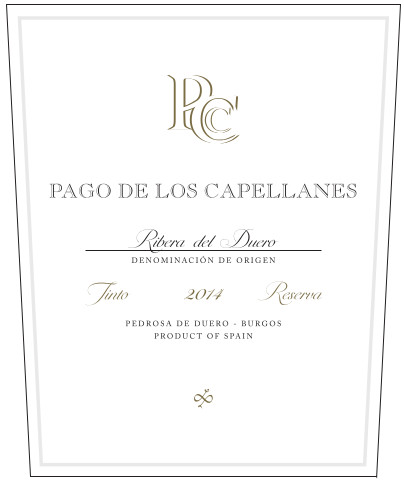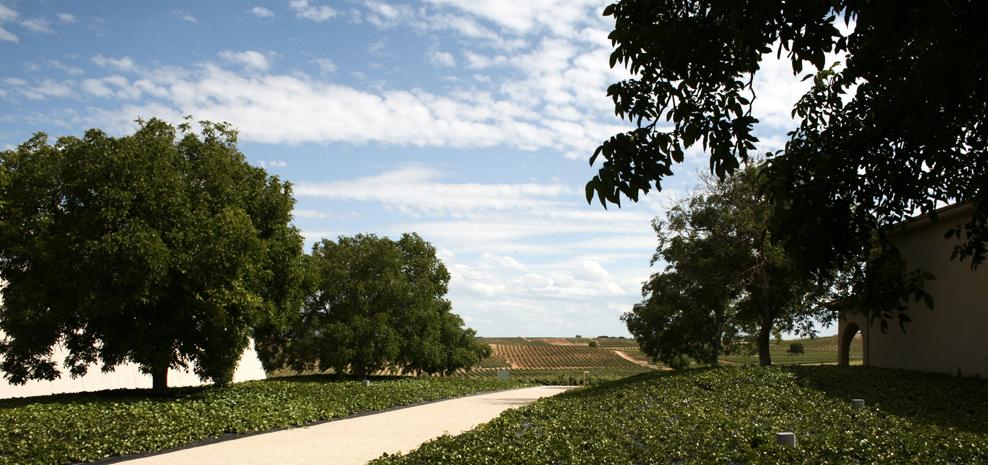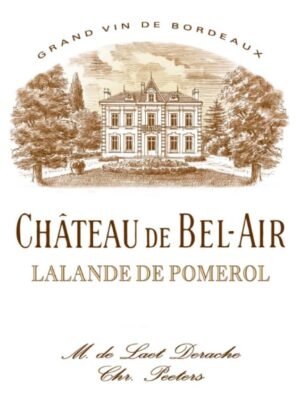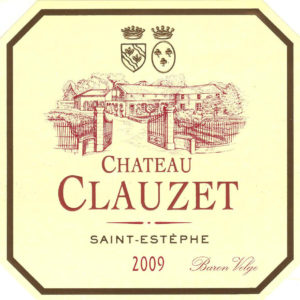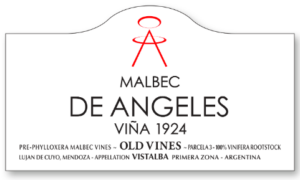ABOUT THE PRODUCER: Pago de los Capellanes
Doroteo Rodero owned a vineyard in Pedrosa de Duero, a small village nestled deep in the heart of the Ribera del Duero region. He left it to his son Paco, who with his wife Conchita Villa slowly expanded it. They started selling grapes to the first Ribera del Duero wineries, before bottling their own wine; the winery, built around eight centuries-old walnut trees, was completed in 1996, the year of their first vintage. An extension was added several years later to accommodate the growing production – the vineyard expanded to 120 hectares through the purchase of another property in Fuentenebro. The construction, finished in 2010, includes a spectacular cellar with exposed concrete arches, ten meters underground. While decidedly bold and modern, it also respects and highlights the beauty of its environment, summing up the winery’s ethos.
Today, the couple’s daughter Estefanía Rodero Villa, manages the winery, producing a modern take on Ribera Tempranillo. The single parcel wines, such as El Picón (the first vintage was 2018), have a more classical, structured character.
The vineyards are divided into 44 parcels, whose fruit is processed separately during vinification. Each plot receives a personalized care that matches its unique features, in order to grow the best possible fruit. In the months leading up to the harvest, samples from each parcel are taken twice a day, in the morning and in the afternoon. They are analyzed to determine the degree of maturity of the berries. Harvest usually begins late September, when the grapes are at their finest. The average daytime temperature at that time of year is 25C (77F). At night, it falls to 5C (41F). This high diurnal temperature variation aids the maturation of the fruit, and heightens the alcohol content, color and tannins, while helping to maintain good acidity and freshness. Harvest is limited to 5.000 kg of grapes per hectare – well below the 7.000 kg allowed by the Regulatory Council of Ribera del Duero.
The construction, finished in 2010, includes a spectacular cellar with exposed concrete arches, ten meters underground. While decidedly bold and modern, it also respects and highlights the beauty of its environment, summing up the winery’s ethos.
Origin of the name: during the 14th century, the inhabitants of Pedrosa de Duero donated small parcels of land to the local clergy, in appreciation for their religious duties. In 1855, what had become a sizable landholding was donated to the city council as part of the Ecclesiastical Confiscations of Mendizábal. The locals still continued to call the area “Pago de los Capellanes” in honor of the chaplains.
Farming/vinification practices: sustainable. The vineyards are farmed organically in vintages that do not present too many difficulties. The wines are vegan.

